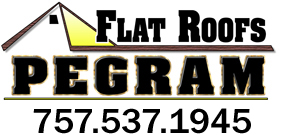TPO, or Thermoplastic Polyolefin, has been around since the 1970s, however it wasn’t widely used until the 1990s/2000s. Why? For a very long time Build-Up Roofing or BUR was used. You might remember seeing crews on a roof with mops slopping around a black tar-looking material. Build-Up Roofs were the mainstay for many years! When TPO first came on the scene, roofing professionals and their clients wanted to first see how it performed and were understandably hesitant to embrace it. Here we are several years later and today, TPO is without question a very popular, cost effective, viable & innovative flat roof solution.
Before we get into the innovations of TPO there is something just as important. Innovations are great IF used properly. Think of a wrench. A wrench works great as a wrench; a tool for tightening and loosening things. Try using a wrench like a hammer, and it doesn’t work so well. It CAN do the job, but not well. A similar scenario can be stated about TPO installation. If TPO is installed by technicians that are not licensed and certified to install TPO, it can be like the wrench/hammer example. They can do the job, but not necessarily well. Furthermore, it could become a VERY expensive mistake as you’ll have to repair or even worse, replace the roof earlier than expected. That being the case, make sure you use a contractor, such as Flat Roofs by Pegram, that are licensed and certified to make sure you get the full life of your new TPO roof.
One more point worth making regarding installation. Many times TPO roofs are a better alternative to other roofing solutions price-wise. However, be very careful. There are some TPO manufacturers that are cheaper, but you could be risking additional expense due to an inferior product. Do your homework to find out what’s being used, how long the company has been around, how long the installer has been around, and if they’re certified. And finally, find out what type of warranty is offered.
One of the innovations of TPO is energy savings. Whether you choose a white, gray, or even black membrane, it will reflect damaging sun rays, reducing the heat in and on your building, and in turn, reducing your HVAC expenses. Even non-HVAC areas such as warehouses and vehicle repair shops benefit because the heat is reflected off of the building in the warmer months. These same energy savings can help with the decision of going with TPO for a long-term solution and the initial cost to install it. One more thing. Since TPO reflects the sun’s rays, it reduces the chance of cracking and material failure due to high temperatures that other roofing systems encounter.
Another innovation of a TPO roof is its resistance to both mildew & corrosion. If you actually see mildew, which you can’t with an aggregate or rock/pebble type roof, it can be dealt with by a contractor. On a similar note, since it’s a membrane rather than aggregate or rock/pebble type roof, it’s very smooth. You can see everything including the welded seams. Even untrained eyes can see if something isn’t correct and take quick action.
Did you know that many TPO products are Energy Star rated? They are. In some cities and municipalities, incentives and rebates might be available for building(s) using an Energy Star-rated roofing system such as TPO. Please check with your local city or municipality to find out if that’s the case for the location of your building.
In our area, (Hampton Roads, Tidewater and North Carolina) we have four distinct seasons, however we’d be remiss if we didn’t mention this. In locations that are hot and sunny year round, basically having only one hot season, a TPO roof might not be the best option. Although TPO is rated for temperatures above 250 degrees for over 60 consecutive days, there is a possibility that TPO could fail in a hot-all-year-long type of climate. Again since we have seasons this doesn’t apply here.
As we mentioned at the beginning, TPO roofing hasn’t been around as long as some of the older flat roof roofing solutions, but it’s a very viable, cost effective and innovative solution for flat roof buildings. Please contact us for a free estimate or call (757) 537-1945.
